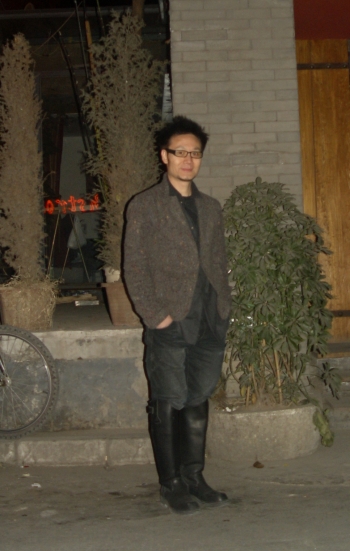3.3 is one of the many malls of Sanlitun, the formerly gritty and atmospheric, now increasingly malled-in section of Beijing. Despite the typically offensive structure in which it is housed, this mall offers a unique charm, since it is devoid of chain stores. The first floor features old-school Chinese gaudiness with the usual lace and glitter, but on the third floor is one of China’s few designer resale shops, specializing in apparel and accessories formerly used by celebrities. In the basement are some very cute craftsy places.
The forth floor is a twisted paradise of designer and trendy rags for men and the leading emporium of Chinese Paul Smith. Several stores specialize in shirts, bags, and ties in patterns and fabrics inspired by and using the label of the quirky British knight. The Paul Smith “replicas” are an excellent example of how Chinese counterfeiters go well beyond mere copying to actually imbibe the style of the original brand in their own new creations. Some of the Paul Smith “replicas” are of tolerable quality, though clearly not up to the original. As many Beijing fashionistas must be aware, “100% cotton” here tends to exhibit many of the, sweat-inducing, qualities of poly-blend fabrics after a few wearings, even if it does seem like cotton while on the rack. The fabric used for the Paul Smith dress shirts is, however, superior to that of the custom-made “100% cotton” shirts in Ya Xiu and Xiu Shui. Stay away from the fake Paul Smith shoes though, as the soles could bring orthopedic problems. More on fake Paul Smith later.
![]()
One of the more interesting shops catering to the designer clothing-addict without a trust fund is right and up from the escalator and offers Dior Homme, Yohji Yamamoto, Raf Simons, and other more cult (read: adored in Shibuya and appropriate for the Japanese physique) designer labels. Photographed here are the two shopkeepers. These replicas are produced in a Guangdong factory run by a Japanese man. Intended for export to Japan, some key samples nonetheless have surfaced in 3.3.
![]()
He goes by the name “Kele” – Chinese for coke (the drink) and hails from the great Northeast. Of course for Dsquared, you don’t need to go to 3.3, as it is more plentiful in Beijing than the Gap in suburbia.
